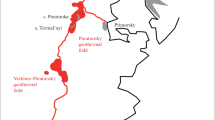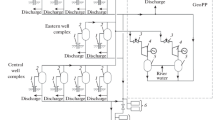Abstract
The potential of a geothermal area is primarily dependent on volume and temperature of the reservoir and adequacy of fluid supply. Inadequate fluid supply may be a more common limiting factor than inadequate heat supply, for heat stored in the upper 10,000 ft of many hot spring systems is 1,000 to 10,000 times their annual natural heat flow. Except in very porous reservoirs, most of this heat is stored in rocks rather than in pore fluids.
Geothermal fields can be classified as hot spring systems or as deep insulated reservoirs with little surface expression; gradations also exist. Hot spring systems have high near-surface permeability, at least locally on faults and fractures, permitting fluids to escape at high rates. Owing to vigorous circulation and escaping fluids and heat, near-surface temperatures are high, but temperatures deep in the system are lower than would prevail with inhibited escape.
Deep reservoirs with little surface expression require permeable reservoir rocks capped by insulating rocks of low permeability. Larderello, Italy, and Salton Sea, California, have slight leakage, but others may have no leakage.
Liquid water, which can be at temperatures far above 100° C because of existing pressures, is generally the dominant fluid. Steam can form by boiling as hot water rises to levels of lower pressure. However, in several explored systems the heat supply is so high and rate of discharge of water so low that steam exists even deep in the system.
Dry steam areas are probably rare. About 30 areas in the United States have been explored for geothermal energy, but dry steam has been proved only at « The Geysers ». Extensive utilisation of geothermal energy must therefore depend largely upon steam « flashed » from hot water with decrease in pressure.
Problems that confront broad utilisation of geothermal energy include: 1) discovery of reservoirs with adequate supply of energy and natural fluids; 2) deposition of CaCO; or SiO2; 3) chemical corrosion; 4) objectionable chemicals in some effluents; and 5) inapplicability of existing public laws.
The optimum environment for a geothermal reservoir includes:
-
1.
Potent source of heat, such as a magma chamber. A depth of at least two miles provides enough pressure to insure water of high temperature; 5 miles may be too deep for effective transfer of heat to circulating water. Such heat sources are most likely to occur in regions of late Cenozoic volcanism.
-
2.
Reservoirs of adequate volume, permeability, and porosity. Withdrawal of fluids from a producing geothermal field is probably at least 5 times natural discharge. If rate of deep inflow through the system does not increase correspondingly, pressures, temperatures, and production rates must eventually decline. Effects are clearest in a small shallow reservoir that cannot compensate for accelerated withdrawal because of « bottlenecks » deeper in the system.
-
3.
Capping of rock of low permeability that inhibits convective loss of both fluids and heat. A deep well-insulated reservoir may have at least 10 times the energy content of an otherwise similar shallow, uninsulated reservoir.
Similar content being viewed by others
Author information
Authors and Affiliations
Additional information
Paper read at the IAV International Symposium on Volcanology (New Zealand), scientific session of Nov. 29, 1965.
Rights and permissions
About this article
Cite this article
White, D.E. Geothermal energy. Bull Volcanol 29, 481–483 (1966). https://doi.org/10.1007/BF02597170
Issue Date:
DOI: https://doi.org/10.1007/BF02597170




